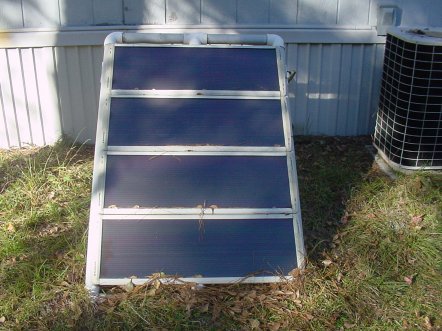
*Old (spring 1999) Solar setup*
This setup came to life when I became involved
with emergency communications in ham radio in the county.
This was during the ramp up of concern about
the impending y2k situation.
I gathered the components as the budget permitted, and when everything was piled in the shed, I put it together.
I used fairly inexpensive panels (at the time),
and made the rack from PVC, with the legs made from telescoping pieces
of pvc.
It has run happily since the spring of 1999,
and has been used during emergency simulations several times, with no problems.

Once set up, the angle was found that gave the best overall charge rate, using the telescoping legs.
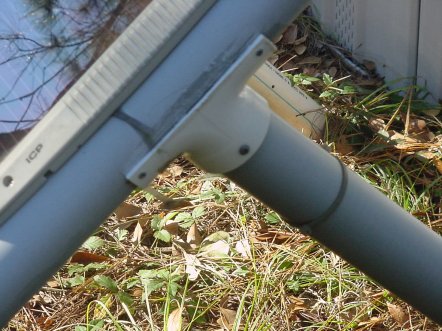
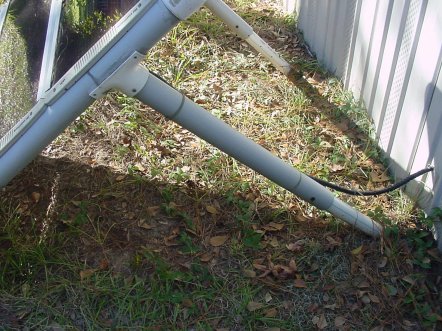
The wire run from the panels was put in Radio Shack spiral wrap, for firmness and protection on the run from the panels to the batteries.
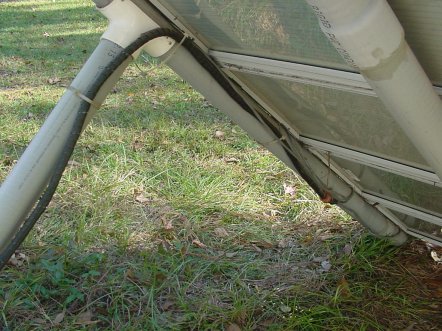
The charge controller, just to the right of the batteries, is simply taped to a handy tie-down for the mobile home.
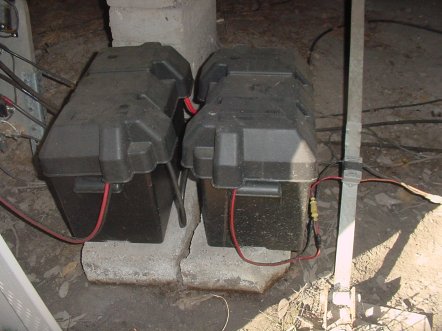
The batteries are marine/RV deep cycle, and according
to their spec sheet, each one provides probable use/time of
5a for 22 hours, up to 25a for 3 hours, and a
list of other variables. With two batteries, I can run the radios
and a few small accessories for considerably longer than I would be in
the dark. Calculations show nearly 8 hours of continuous operation
of a radio at 100w. This figure is completely unrealistic, since
no one would have a radio keyed down for that long ever. It does
show me that I have excess power for adverse situations.
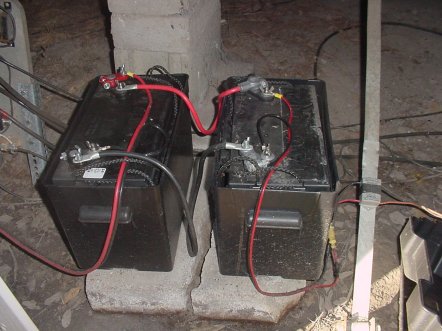
The dc feeder goes up through the same place that
I run all the coax runs into the station. It goes up to the dc distribution
location behind the radio rack. The lightning/surge/grounding
panel for the comm gear is just behind the dc feed, and the
coax bundle for all the current antennas is the
large spiral wrapped bundle.
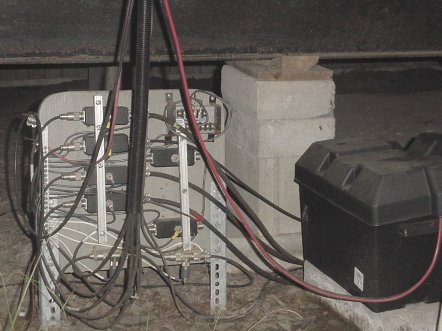
Inside, the coax run terminates at a set of antenna switches, directly above the entry, at the end of the desk The dc comes in at the same point and goes to the back of the desk, to the panel shown on the right, below...
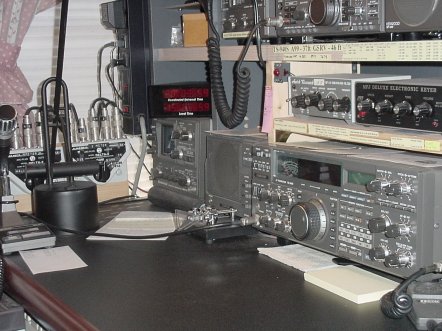
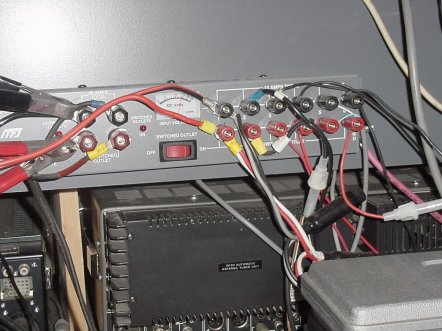
Almost directly above the dc panel, there is an opening to facilitate quick removal of all the wiring etc necessary when grabbing the rigs for a bugout, or moving to an EOC.
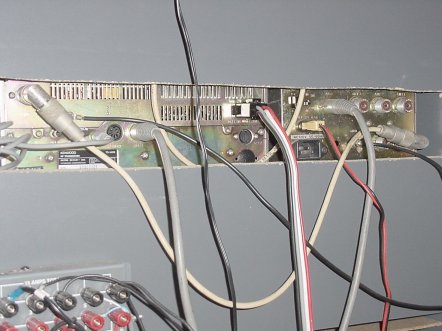
All materials at this site not otherwise credited are Copyright © 1996 - 2002 Trip Williams. All rights reserved. May be reproduced for personal use only. Use of any material contained herein is subject to stated terms or written permission.